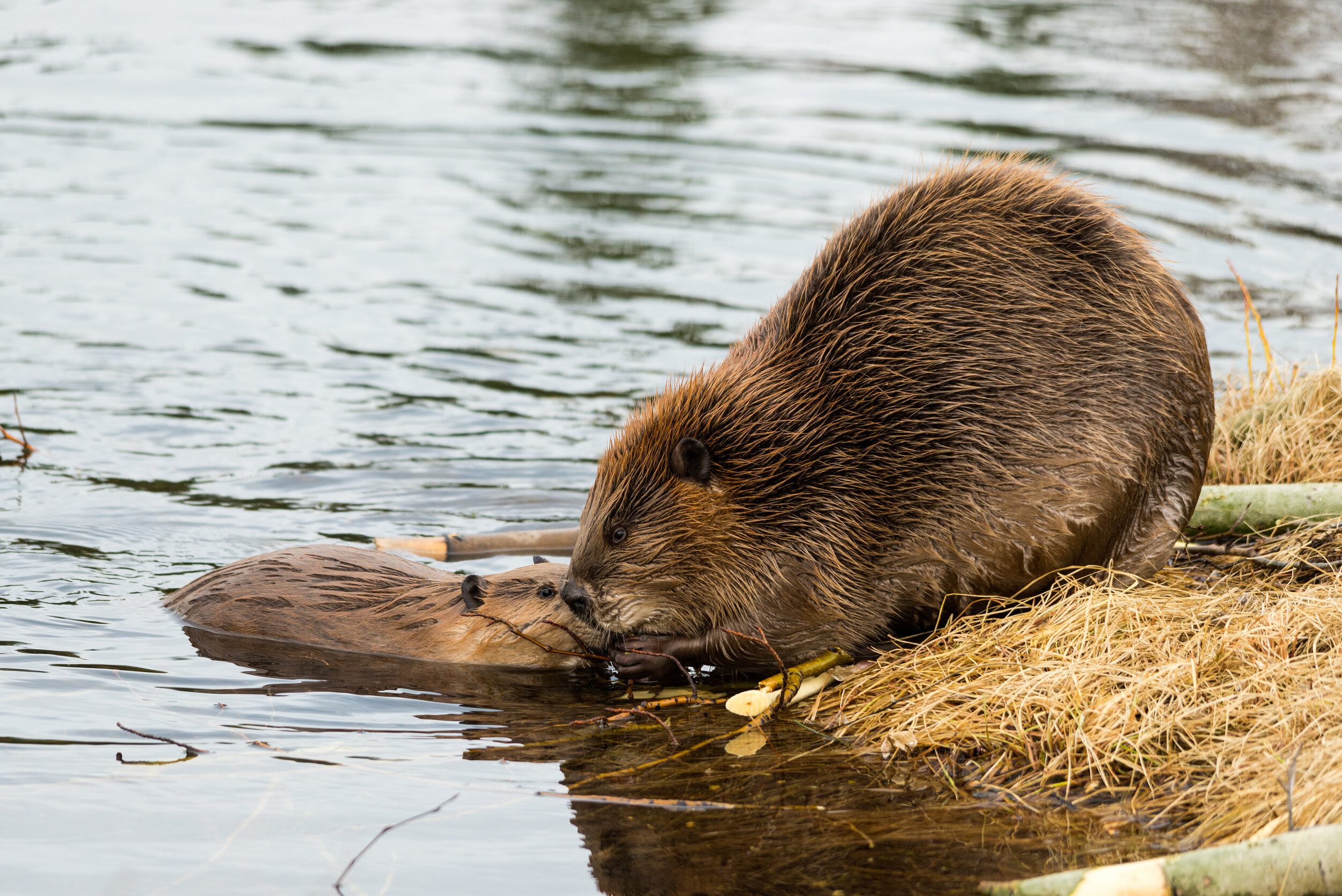Families in Nature: Canadian Animals with Strong Family Bonds
A mother beaver and kit showing affectionate moment.
Happy Family Day Bayfield! Many kinds of families exist all around us in nature, and this is the perfect month to celebrate family in all its forms! Some types of nature's families may be very similar to our own, while others are very unique! Lets take a look at a few different families that may be familiar. Have you ever spotted an animal families in the wild?
We all know that birds hatch their young from eggs in a nest. What an amazing way to raise a family! Let’s take a closer look at the northern cardinal. Male cardinals are easily identifiable because of their bright red feathers, whereas females tend to have more of a dull and greyish colour. Once cardinals choose their mate, they will often remain as a couple, having several broods per year, usually between March and September. Usually, the female will construct the nest, while the male brings her building supplies and food. Cardinals don't often re-use a nest, so after the eggs hatch, the female will go ahead to construct a new one, while the male sticks around to watch the young. The hatchlings are very clumsy, born without feathers and with their eyes closed. Both parents are responsible for feeding the young until they mature.
A mother squirrel and baby squirrel on a coniferous tree branch.
The common squirrel is another species that is often found in residential neighborhoods. You may have noticed squirrel families or baby squirrels in your own backyard! Female squirrels reach maturity at about one year old and mating season starts first towards the end of February, and again in the summer time. Squirrels are mammals and give birth to about 2 to 5 babies at a time. The new-born squirrels are called "kittens" and begin their lives naked, toothless and almost blind. The mother alone will take care of the young until they mature at about four months. There are several varieties of squirrel, and the ground-dwelling species can remain in "families" or colonies, while the tree climbers tend to be more independent.
Wolves can be found all over Canada, usually in the less settled areas, and their family structure is quite similar to that of a human family in many ways. A family of wolves is called a pack, and consists of a male parent, a female parent, and the most recent 2-3 litters of pups, at a time. A pack of wolves live in a den, which is a simple cave or hole that is used for shelter and protection to raise and nurse the young. The pack will hunt together, often using teamwork, and bring back food to the den so that the mother can remain with the babies. The older members of the pack from previous litters will start to help the mother care for the newborns, taking turns playing, feeding and even babysitting their siblings. Lastly, lets take a look at the family of the beaver - an official emblem of Canada!
Lastly, beavers are monogamous creatures, meaning they stay with their partner for life! Beaver families live in a colony which consists of the two parents and the most recent litters of beaver kits, which arrive in sets of 2-4 at a time. Beavers breed from January to February, and the young will stay with the family for about 2 years before going off on their own. One very interesting and unique feature of the beaver colony is its form of shelter, the beaver dam. Beavers are one of the very few mammals other than humans that can manipulate their environment and construct a home in such a complex way. A beaver dam consists of tree branches, stems, mud, grass and leaves, to form a multi-leveled shelter, that also helps to control the flow of water and slow-running streams. Beavers will keep a stash of food for the colder months and protect the family's territory by applying its musk to dirt mounds around the lodges' borders.
Family day is the perfect time to appreciate our own families, but remember that families come in all shapes, sizes... and even species! This February, take the time to appreciate all of the natural families around you! Many of them will be very busy raising their newborns at this time of year!

